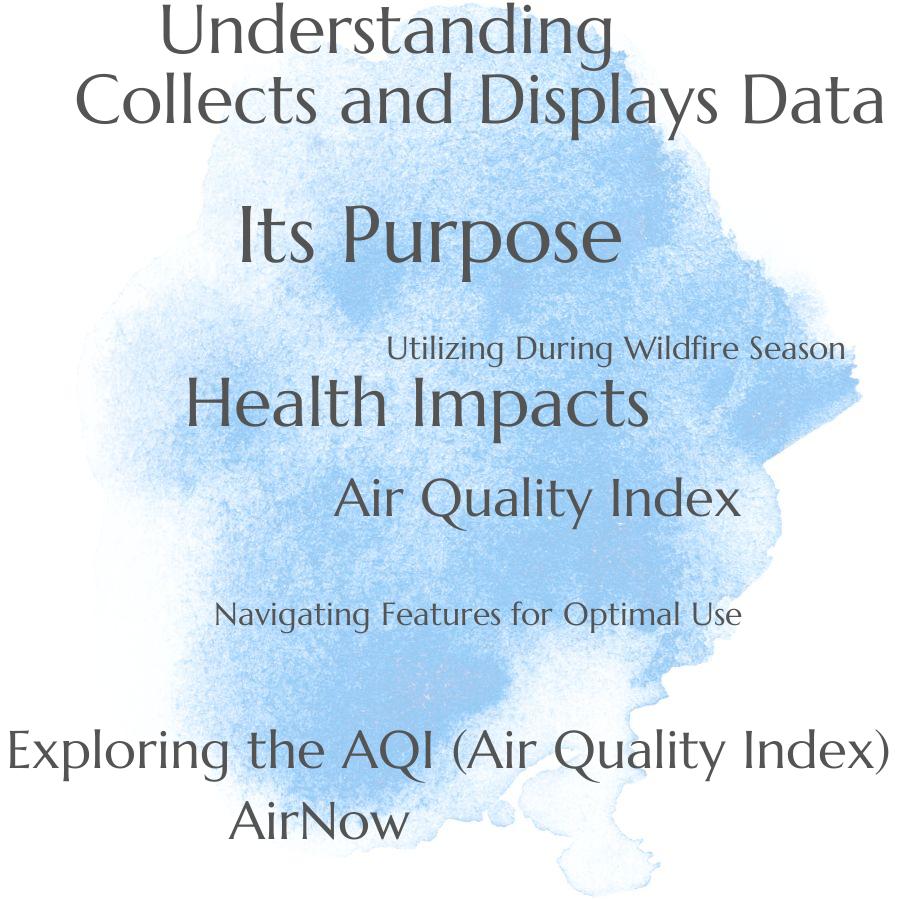Discover how AirNow can transform your understanding of local air quality and provide actionable insights to protect your health.
Key takeaways:
- AirNow empowers individuals to make informed decisions about their activities.
- The Air Quality Index (AQI) quantifies air pollution on a scale.
- AirNow collects data from monitoring stations across the US.
- AirNow provides real-time updates on air quality during wildfire season.
- Users can customize their experience with AirNow’s features for optimal use.
Understanding AirNow and Its Purpose

AirNow is a key tool in our public health toolbox, launched by the EPA, designed to keep the public informed about the air quality in their immediate environment. At its core, AirNow functions as a communication platform, delivering real-time data on pollutants like ozone and particulate matter that could pose a health risk when inhaled.
This information is particularly valuable to vulnerable populations, including individuals with asthma and other respiratory conditions.
It does more than just warn about potential hazards; it empowers citizens to make informed decisions about their daily activities. Whether it’s choosing a longer but cleaner route for your morning jog or deciding to stay indoors on a day when pollution levels are high, AirNow’s data is an invaluable resource in adopting a proactive approach to health and wellness in relation to air quality.
In an era of increasing environmental concerns, the significance of a service like AirNow can’t be overstated. By providing the public with accessible air quality metrics, it invites community engagement and awareness, promoting a culture where individuals are alert to the quality of their air and assertive in protecting their health against pollution.
Exploring the Air Quality Index (AQI)
The Air Quality Index is a tool crucial in translating complex air quality data into a straightforward scale, beneficial for the general public’s comprehension. Here’s a breakdown to grasp the concept better:
1. Scale of 0 to 500: AQI quantifies air pollution on a scale where higher values denote poorer air quality and potentially greater health risks.
2. Color-Coded Categories: Categorized into colors, the AQI conveys health implications instantly – green signifies good quality, while maroon signals hazardous conditions.
3. Health Guidelines: Each AQI category is associated with public health advice, particularly crucial for vulnerable populations such as children, the elderly, and those with respiratory issues.
4. Pollutant Specifics: The index accounts for five major air pollutants regulated by the Clean Air Act – ground-level ozone, particulate matter, carbon monoxide, sulfur dioxide, and nitrogen dioxide – each with distinct impacts on human health and the environment.
5. Real-Time Relevance: AQI levels can change throughout the day; thus, it’s essential to check the index regularly to make informed decisions about outdoor activities, especially during high-pollution events.
Understanding AQI is the first step in recognizing the significance of air quality in our daily lives and the need for staying informed to protect our health.
How AirNow Collects and Displays Data
AirNow leverages a robust network of monitoring stations strategically placed across the United States. These stations, managed by various environmental agencies, consistently gather data on air pollutants such as ozone, particulate matter, and carbon monoxide.
The real beauty lies in the fusion of state-of-the-art satellite observations with ground measurements, ensuring a comprehensive snapshot of our atmosphere’s health.
This data undergoes rigorous quality assurance protocols before being transformed into an understandable format for the public. By utilizing GPS coordinates, AirNow presents air quality readings mapped to specific geographical locales, providing users with localized, real-time air quality assessments.
Crucially, this information assists individuals in making informed daily decisions about outdoor activities, especially those with respiratory conditions.
Utilizing AirNow During Wildfire Season
Wildfires dramatically affect air quality, releasing particulate matter and hazardous gases. Awareness is key to minimizing health risks during these events, and that’s precisely where AirNow becomes an indispensable resource. It provides real-time updates on the Air Quality Index (AQI) specific to areas impacted by wildfire smoke.
Here’s how to make the best use of this tool:
- Check daily for AQI reports in your vicinity to assess immediate risks.
- Sign up for AirNow alerts to receive timely notifications about deteriorating air conditions.
- Follow guidance on activity levels appropriate for current air quality, especially for sensitive groups.
- Use the interactive map feature to track smoke plumes and their potential impact on your local air quality.
- Consult the “Smoke-Ready Toolbox for Wildfires” to prepare and protect yourself and your loved ones.
By leveraging AirNow’s data forecasting features, you can anticipate air quality changes and plan your outdoor activities accordingly. This foresight is critical, as air quality can fluctuate rapidly in response to wildfire dynamics. Stay informed, stay prepared, and prioritize your respiratory health with AirNow during wildfire season.
Navigating AirNow’s Features for Optimal Use
To maximize the potential of AirNow, users should delve into its extensive toolkit. Start by customizing your experience with the ‘My Air’ feature, which allows you to create a personalized dashboard by saving your favorite locations. This offers immediate access to relevant air quality data at a glance.
Another significant asset is the real-time air quality map, providing a visual representation of air quality across different regions. It’s a quick way to assess the situation in your vicinity or prepare for travel.
Subscribing to AirNow’s EnviroFlash service provides email alerts on air quality, ensuring you are informed when conditions change. For those on the move, the AirNow mobile app keeps critical information at your fingertips. It amalgamates data into an easy-to-understand format, essential for making informed decisions, whether it’s planning your daily activities or understanding when to limit outdoor exposure.
Last but not least, the AQI forecast tool grants users a look into the near future, assisting with planning ahead to minimize the effects of poor air quality on health and outdoor plans. Using these features effectively can have a substantial impact on how you navigate air quality issues.